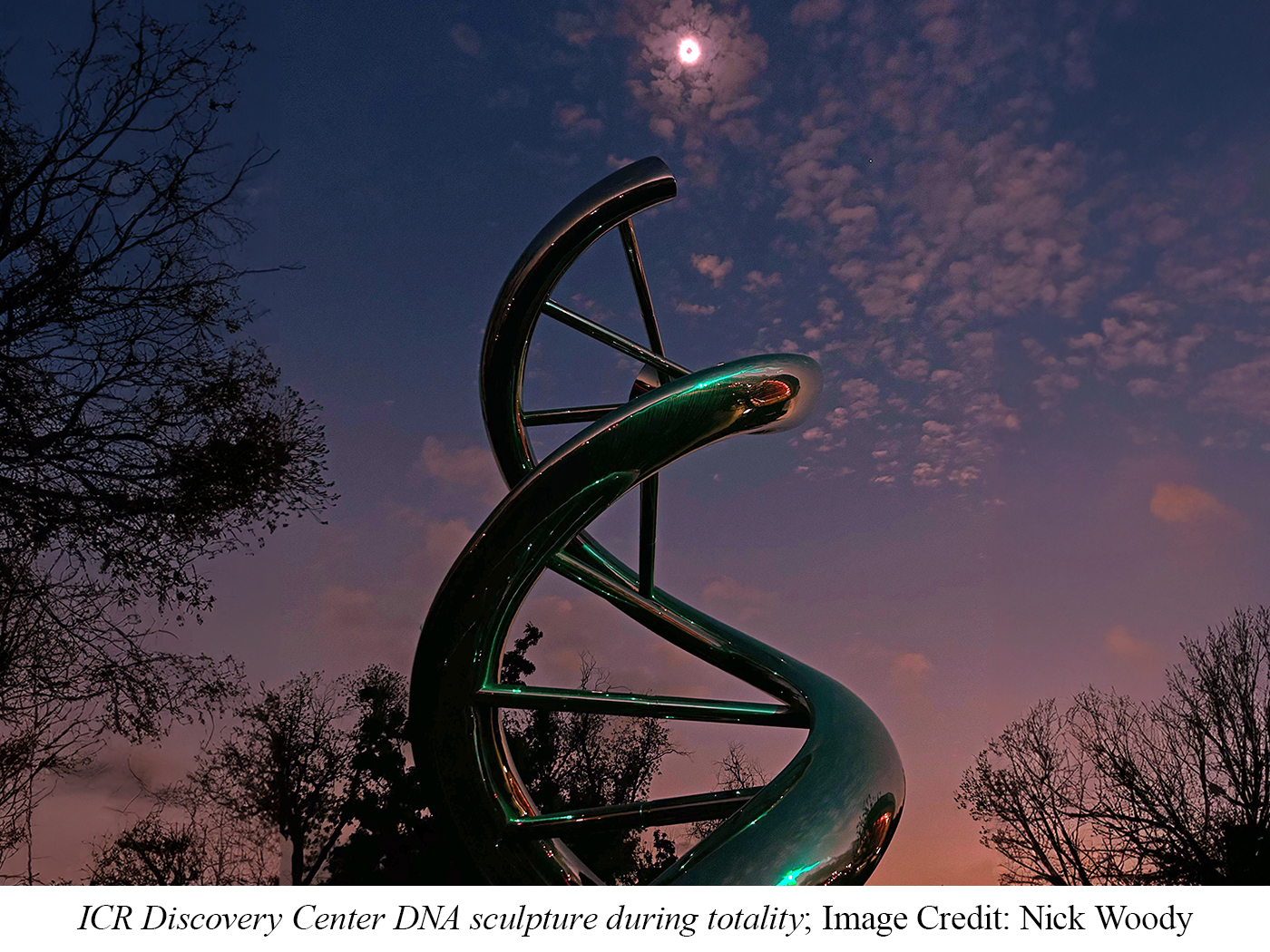Tiny volcanic glass beads suggest “surprisingly recent” lava flows on the moon that are “difficult to reconcile with the accepted history of lunar volcanism.”1,2 These tiny glass beads were retrieved by the Chinese Chang’e 5 spacecraft, a replica of which is shown in the above photo. The spacecraft returned to Earth in 2020. Subsequent chemical analysis of the beads suggested they were volcani... More...
Astronomers using the James Webb Space Telescope have recently confirmed that two galaxies are extremely distant, with one becoming the new record holder as the most distant galaxy from Earth.1,2 The new record-holding galaxy is designated as JADES-GS-z14-0 and is shown in the inset in the above image. By uniformitarian reckoning, this galaxy existed just 290 million years after the supposed Big Bang, yet it looks too mature for ... More...
In April 2024, some of the world’s leading cosmologists convened at the Royal Society in London to question the cosmological principle—the assumption that the universe is the same everywhere and in every direction.1,2 This is a highly significant development since the cosmological principle is a foundational assumption of the Big Bang model for the universe’s origin.
The cosmological principle ... More...

The skies cleared above North Texas on Monday, April 8, for a spectacular view of the 2024 Great American Solar Eclipse. Hundreds of guests joined the Institute for Creation Research to witness this incredible sight at First Baptist Church ... More...
Before discovering thousands of planets in other solar systems, scientists tended to assume that other solar systems would be very similar to our own. Yet this is turning out not to be the case. Indeed, NASA science writer Pat Brennan said about our solar system that “after a quarter century of discovery revealing thousands of exoplanets in our galaxy, things look very different. In a word, we are ‘weird’—at least am... More...
On Monday, April 8th, the moon will move directly between the earth and the sun, resulting in a total solar eclipse visible in northern Mexico, much of the United States, and far-eastern Canada. Over the course of about one hour and 15 minutes, the moon will slowly move in front of the solar disk until it completely blocks it out. The complete covering of the solar disk marks totality, when darkness covers the part of the earth that happens... More...
“You alone are the LORD; You have made heaven, the heaven of heavens, with all their host, the earth and everything on it, the seas and all that is in them, and You preserve them all. The host of heaven worships You.”1
A total solar eclipse is an incredible celestial event!
God has designed our solar system such that our moon sometimes moves between Earth and the sun in an incredible display call... More...
Scientists have analyzed data obtained from the Cassini spacecraft and concluded that irregularities in the orbit of Saturn’s moon Mimas indicate that it contains a hidden ocean of liquid water beneath its surface.1 Similar arguments have already been published,2–4 but the fact that this result has now been published in the prestigious journal Nature suggests the evidence for this claim is stronger t... More...
















